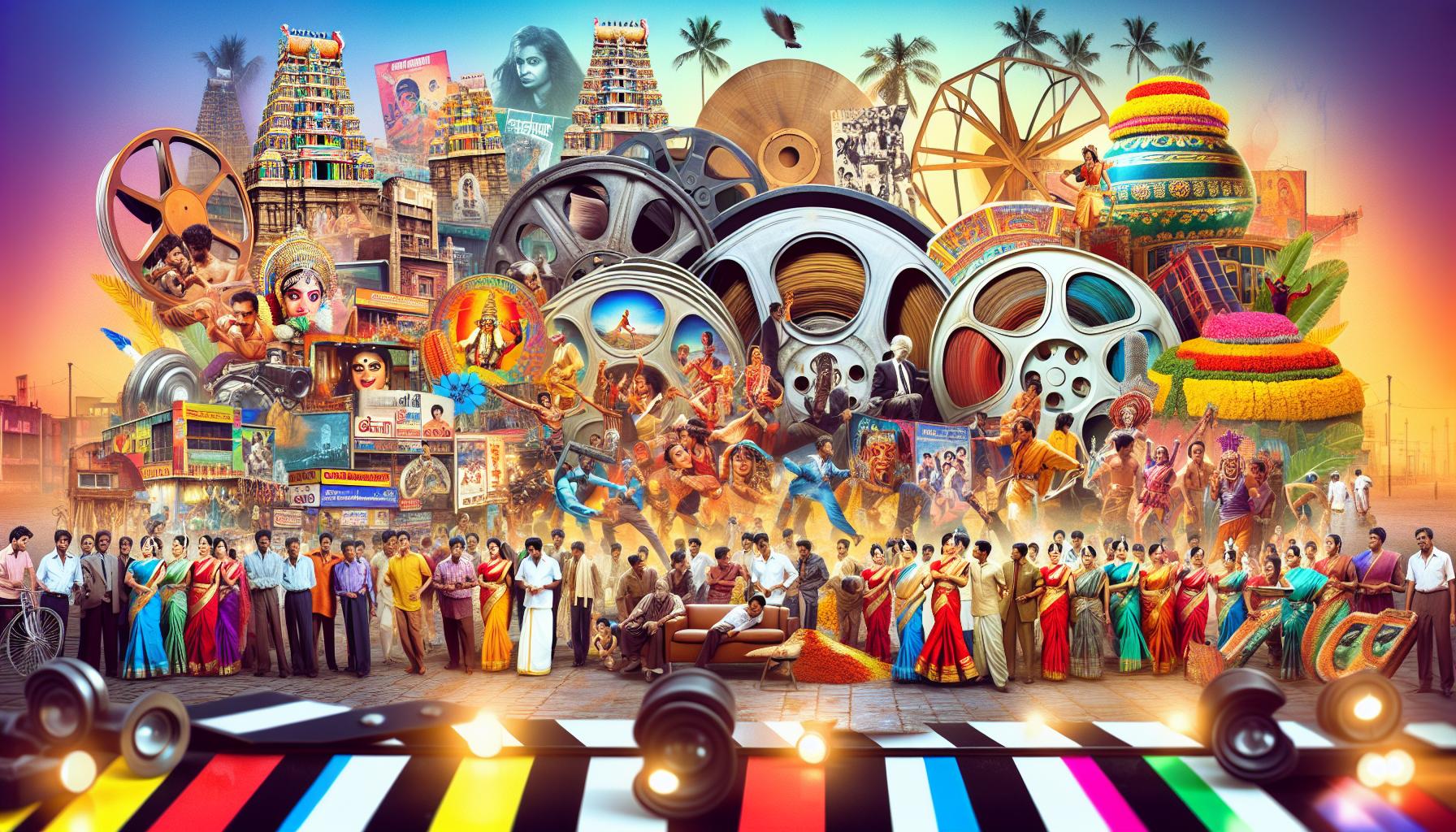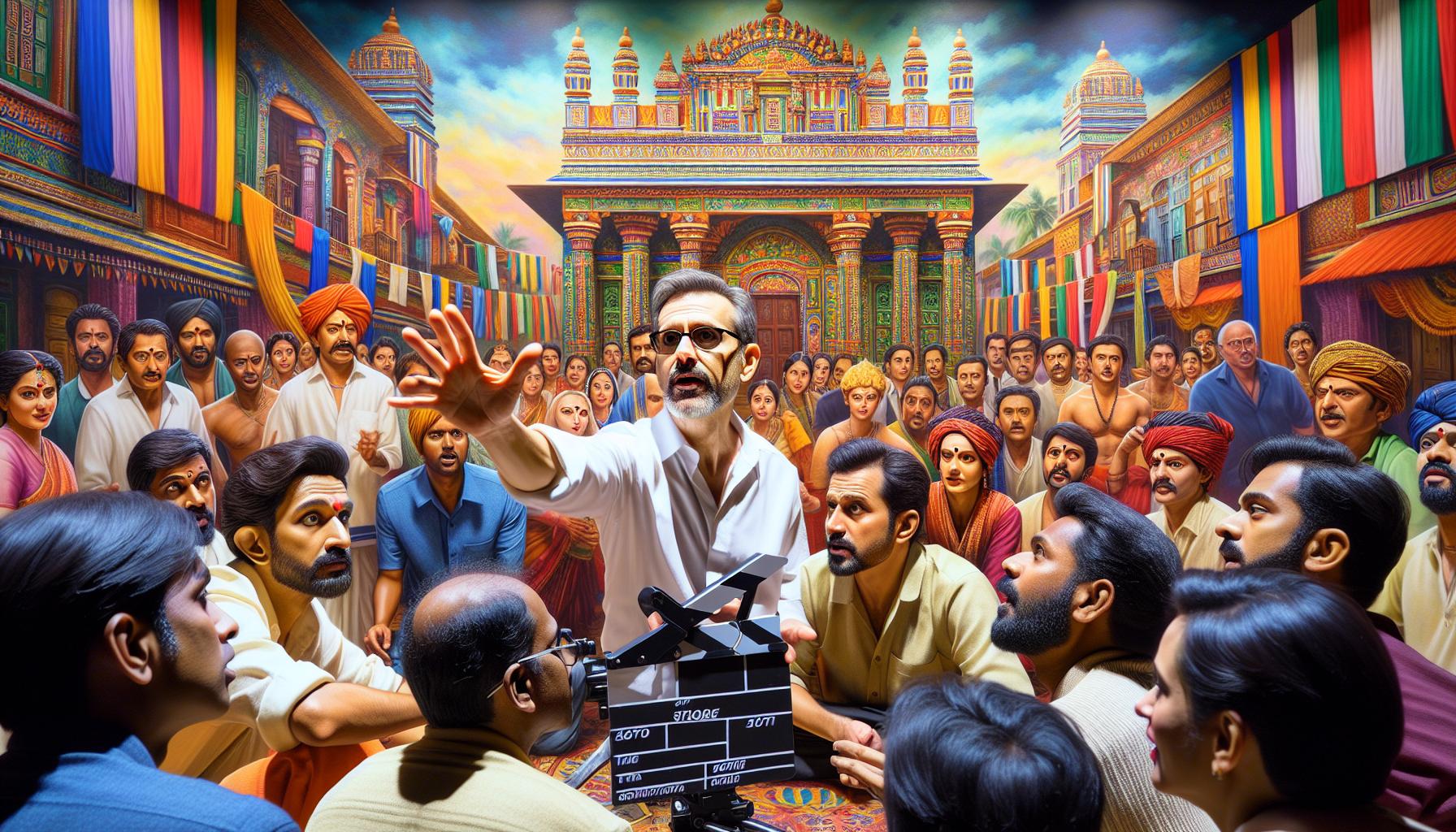Key Takeaways
- Rising Global Influence: South Indian cinema is increasingly captivating international audiences through rich storytelling and innovative narratives, marking its significance in the global film landscape.
- Technological Integration: Advancements in technology, such as high-definition filming and CGI, are enhancing production quality and elevating the overall cinematic experience.
- Content-Driven Narratives: A shift towards unique and relatable stories is evident, as filmmakers prioritize emotional depth and authenticity over conventional commercial formulas.
- Streaming Platform Impact: The growth of streaming services is broadening the distribution of South Indian films, making regional cinema accessible to a wider audience and promoting cultural exchange.
- Genre Diversification: Contemporary filmmakers are exploring a variety of genres, creating innovative stories that blend traditional themes with modern narratives, thus appealing to diverse viewer preferences.
- Collaborative Opportunities: Increasing collaborations with international talent are enriching South Indian cinema, fostering cross-cultural dialogue and enhancing the industry’s global presence.
South Indian cinema has been making waves, captivating audiences not just in India but across the globe. With its rich storytelling and vibrant visuals, filmmakers are pushing boundaries and redefining what regional cinema can achieve. From the rise of innovative narratives to the increasing importance of technology in filmmaking, trends in this dynamic industry are evolving rapidly. As streaming platforms gain popularity, South Indian films are reaching wider audiences, showcasing diverse cultures and languages. The blend of traditional elements with contemporary themes has sparked a new wave of creativity, attracting both seasoned filmmakers and fresh talent. This article delves into the latest trends shaping South Indian cinema, highlighting its impact on the broader film landscape and what it means for the future of storytelling.
South Indian Cinema Trends
South Indian cinema encompasses film industries from four major states: Tamil Nadu, Andhra Pradesh, Telangana, and Kerala. Together, these industries produce films in Tamil, Telugu, Kannada, and Malayalam languages, representing rich cultural diversity. Significant regional narratives focus on local folklore, history, and social issues, adding depth and authenticity to storytelling.
Technological advancements play a crucial role in the evolution of South Indian cinema. High-quality production values, special effects, and innovative cinematography enhance the viewing experience. Filmmakers increasingly adopt digital platforms for distribution, allowing wider access to audiences beyond regional bounds.
Recent trends demonstrate an increasing preference for content-driven narratives over traditional commercial formulas. Filmmakers prioritize unique stories and emotional depth, appealing to both critical acclaim and box-office success. Collaborations with international talent and adaptations of global stories contribute to this diversification.
The rise of streaming services like Netflix and Amazon Prime Video significantly influences South Indian cinema’s growth. Accessibility to a global audience fosters an exchange of styles and ideas, enriching creativity within the local industries. This expansion reinforces the industry’s significance in the global cinematic landscape.
Evolution of South Indian Cinema Trends

South Indian cinema has undergone substantial transformations over the decades, reflecting cultural shifts and advancements in technology. These changes highlight the industry’s adaptability and resilience in a dynamic entertainment landscape.
Historical Background
South Indian cinema began in the early 20th century with silent films like “Keechaka Vadham” (1916), the first Tamil film, and “Bhakta Prahlada” (1931), the first Telugu talkie. The 1950s and 1960s marked a significant era with the emergence of iconic figures such as M. G. Ramachandran and N. T. Rama Rao, who shaped popular narratives. Regional cinemas established their unique styles, focusing on folklore, mythology, and social issues. This period laid the groundwork for modern storytelling techniques, emphasizing realism and character depth.
| Year | Milestone |
|---|---|
| 1931 | Release of the first Telugu talkie, “Bhakta Prahlada.” |
| 1954 | Introduction of color films in South Indian cinema. |
| 1976 | Release of “Bharathiraja’s,” which revolutionized rural storytelling. |
| 1991 | Launch of satellite television, increasing accessibility. |
| 2000s | Rise of multiplexes enhances audience experience. |
| 2015 | Surge in digital production and online streaming platforms. |
Key milestones such as the introduction of color in films and the launch of satellite television revolutionized audience engagement. The 1990s saw the emergence of multiplexes, allowing for diverse offerings and experiences. Recent years emphasize digital production and widespread streaming, opening avenues for global audiences. Each milestone reflects the industry’s evolution, demonstrating its ability to incorporate contemporary themes while honoring its rich heritage.
Current Trends in South Indian Cinema

Current trends in South Indian cinema highlight a significant evolution in storytelling, production, and audience engagement. Diverse genres and advanced technology play crucial roles in redefining the cinematic landscape.
Genre Diversification
Genre diversification characterizes contemporary South Indian cinema, breaking traditional molds. Filmmakers explore various genres, including horror, thrillers, and biopics, alongside mainstream masala films. Recent successful releases like “Jersey” (Telugu) and “Super Deluxe” (Tamil) showcase this trend, blending elements of drama with innovative narratives. The rise of regional content, such as period dramas and social commentaries, reflects a growing willingness to experiment and address pertinent cultural issues. This shift attracts a broader audience, enhancing appreciation for regional storytelling beyond borders.
Technological Advancements
Technological advancements significantly transform South Indian cinema, elevating production quality and narrative depth. Filmmakers utilize high-definition cameras, drone technology, and sophisticated editing software to deliver visually stunning films. Notable films like “Baahubali” exemplify the effective use of CGI and VFX, creating immersive viewing experiences. Streaming platforms further revolutionize distribution methods, enabling global access to content. The adoption of virtual reality and augmented reality in promoting and experiencing films is also emerging. These innovations not only enhance storytelling but also solidify South Indian cinema’s position in the global film industry.
Impact of Regional Films on Global Cinema

Regional films, particularly South Indian cinema, significantly influence global cinema through unique storytelling, cultural representation, and innovative techniques. The narratives rooted in local folklore and social issues resonate with universal themes, appealing to diverse audiences worldwide.
Cultural Exchange
Cultural exchange between South Indian cinema and global film industries enriches narratives and aesthetics. Filmmakers incorporate elements from various cultures, creating films that reflect a blend of local and international influences. This fusion enhances storytelling depth, resulting in a more immersive viewing experience for global audiences.
Diverse Storytelling
Diverse storytelling from South Indian films introduces fresh perspectives that challenge conventional narratives. Films like “Jersey” and “Super Deluxe” showcase this evolution by blending genres and presenting unique plotlines. Such creativity inspires filmmakers globally to explore unconventional themes, pushing the boundaries of cinema.
Technological Innovations
Technological innovations, such as high-definition filming and advanced CGI, play a crucial role in the global appeal of South Indian cinema. Productions like “Baahubali” exemplify how cutting-edge technology can elevate storytelling, attracting international viewers. As these films incorporate superior production values, they set new industry standards that influence global cinema.
Streaming Platforms
Streaming platforms facilitate the global reach of South Indian films, allowing international audiences to access and appreciate regional content. The success of these films on platforms like Netflix and Amazon Prime Video demonstrates their growing popularity outside India. This accessibility fosters a wider understanding and appreciation of South Indian culture in global markets.
Collaborative Projects
Collaborative projects between South Indian filmmakers and international talent further expand the impact of regional films on global cinema. Such partnerships often lead to successful adaptations, showcasing South Indian stories to broader audiences. They also promote cross-cultural dialogue, enriching worldwide cinematic experiences.
Recognition and Awards
South Indian cinema receives increased recognition at international film festivals and award ceremonies, enhancing its global stature. Acclaimed films garner accolades, highlighting their artistic and narrative merits. This recognition encourages further exploration of regional narratives within global cinema, inspiring filmmakers to delve deeper into culturally rich stories.
Future Projections for South Indian Cinema Trends
Future projections for South Indian cinema trends suggest significant growth and continued innovation. Expectations include a stronger emphasis on content-driven narratives, with filmmakers increasingly focusing on unique, relatable stories. This shift indicates a movement away from conventional formulas towards narratives that resonate on a deeper emotional level. Technological advancements promise to play a crucial role in shaping the industry. Anticipated improvements in virtual and augmented reality will enhance viewer engagement. Filmmakers will likely explore these technologies to create immersive experiences that captivate audiences. The growth of streaming platforms will drive broader distribution possibilities. The increasing popularity of regional films on global streaming services signifies a shift in audience preferences. Access to high-quality productions will foster greater appreciation and understanding of cultural diversity found in South Indian cinema. Collaborations with international filmmakers are expected to rise, introducing fresh perspectives and diverse storytelling techniques. These partnerships will enhance the global appeal of South Indian cinema, allowing for an exchange of ideas that enrich narrative depth.
The influence of social media as a promotional tool will gain importance in reaching wider audiences. Filmmakers will utilize platforms to market films creatively, engage with viewers, and build anticipation prior to releases.
Overall, these projections indicate a vibrant future for South Indian cinema. The focus on innovative storytelling, technological advancements, and international collaboration will redefine regional cinema’s impact on the global stage. The landscape of South Indian cinema is evolving rapidly. With its unique storytelling and cultural richness, it continues to captivate audiences around the world. The integration of technology and innovative narratives not only enhances production quality but also broadens the reach of these films. As filmmakers embrace content-driven approaches and explore diverse genres, the future looks promising. Collaborations with international talent and the rise of streaming platforms are set to amplify the global presence of South Indian cinema. This dynamic industry is poised to redefine cinematic experiences, making it an exciting time for both creators and viewers alike.



